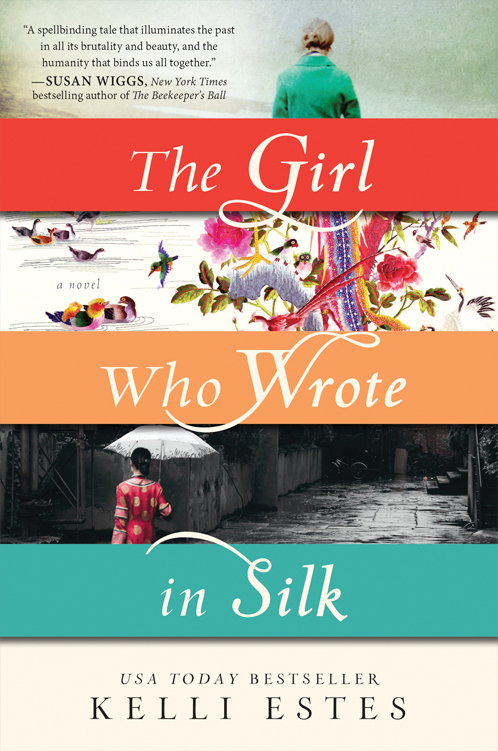
Inara Erickson faces a difficult return to Orcas Island in the San Juan Islands. A childhood of wonderful summers visiting her Aunt Dahlia ended when her mother was killed in a car accident on Orcas. When Aunt Dahlia dies and leaves the large house and estate to her, Inara has to overcome her reluctance and get the property ready to sell. Then she can take up the corporate job her father has arranged for her, and make use of her new business degree.
However, she begins to fall under the island’s spell again and, while working in the house, finds a beautifully embroidered silk sleeve. She wonders who could have done this spectacular work, why it had been cut from a robe, and how it came to be hidden here.
In an alternate story line, a second generation immigrant in Seattle named Mei Lien lives with her father and grandmother above their dry goods shop until a violent mob ousts them. The Chinese Exclusion Act of 1882, reflecting the anti-immigrant emotions common once the Chinese were no longer needed to build the railroads, results in the mob bent on ethnic cleansing. They force hundreds of Chinese residents onto a ship captained by Duncan Cameron, supposedly to be sent to San Francisco and then to China.
This debut novel has a lot to recommend it. Based on true events, the descriptions of Mei Lien’s life are particularly rich. Everyone in my book club found things they enjoyed, such as the setting on Orcas Island, the detailed description of the embroidery, the deep dive into Chinese spirituality, and the historical information about the plight of the Chinese residents—so relevant to today.
At the same time, we were put off by the multitude of coincidences powering the plot, as well as some plot points that were just too unrealistic. Also, while we were captivated by the first part, our interest waned as the story began to concentrate on the two young women’s rather predictable romances. Most of us felt that, instead of a dual timeline, a novel about Mei Lien alone would have been something really special.
Still, our curiosity about the sleeve and our fondness for Inara and Mei Lien carried us through, and we all concluded that we enjoyed the book and were glad we read it. I, for one, look forward to the author’s future novels, as her skills—already great—grow even more.
Do you like dual timeline stories? Can you recommend a good one you’ve read?